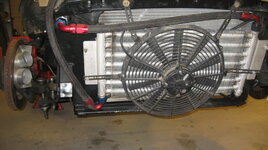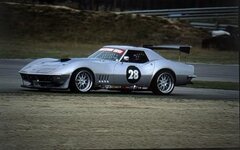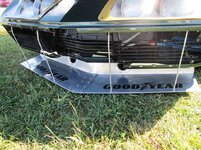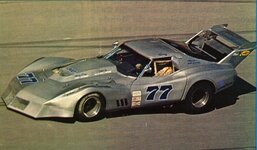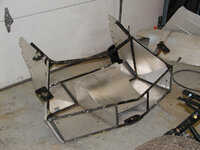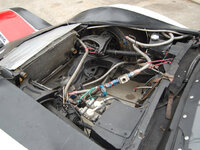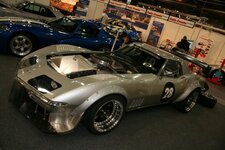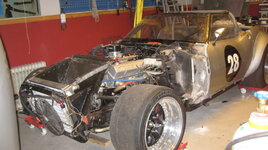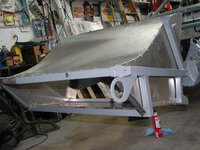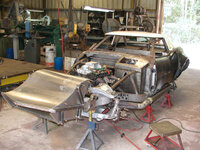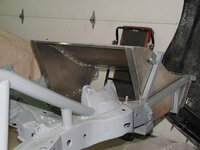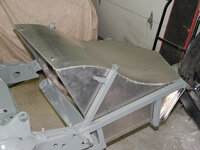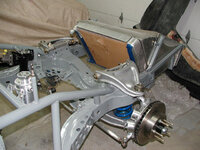I like it but, I think I'm good in the additional projects department. :crap:
You are using an out of date browser. It may not display this or other websites correctly.
You should upgrade or use an alternative browser.
You should upgrade or use an alternative browser.
Internal Body Aerodynamics
- Thread starter vette427sbc
- Start date
rtj
Well-known member
- Joined
- Nov 5, 2011
- Messages
- 3,485
- Reaction score
- 166
At the end they all drive down as a group and high five the spectators. You get a good look at the cars.
That area is really breathtaking, nearby is a free park called garden of the gods.
[ame]https://www.youtube.com/watch?v=UVhTdq-5LHo[/ame]
That area is really breathtaking, nearby is a free park called garden of the gods.
[ame]https://www.youtube.com/watch?v=UVhTdq-5LHo[/ame]
Loved the engine sound sampler!
rtj
Well-known member
- Joined
- Nov 5, 2011
- Messages
- 3,485
- Reaction score
- 166
C2 panel to close off rear end
https://dynamiccorvettes.com/product/63-67-carbon-fiber-lower-diffuser/
https://dynamiccorvettes.com/product/63-67-carbon-fiber-lower-diffuser/
69427
The Artist formerly known as Turbo84
- Joined
- Mar 30, 2008
- Messages
- 3,077
- Reaction score
- 38
I've been interested in doing a couple subtle aero experiments on my antique. Most of the tracks I have the opportunity to run on are short/tight enough that my peak speeds are probably only about 130 mph, so aero drag issues aren't all that important to me. I'm generally happy to put up with a bit of extra aero drag if I can get some reduced lift (or added downforce if I get lucky). I've mentioned before (somewhere) that I'd like to install some minor hardware on the cowl area to cause air to stagnate (My understanding is that this is the more correct word) right in front of the windshield. While this will certainly increase drag (but come in handy in the braking zones), the added pressure in that area should add downforce in the center of the car (on both axles hopefully), and the extra air pressure should help feed the L88 airbox and engine, slightly helping to offset the extra drag. But so far, I haven't had time to come up with a design of this "piece" that would be reasonably inconspicuous on the car.
The second item, which may not work in conjunction with the above piece (due to the effective increase in frontal area from the stagnant air mass at the front of the windshield), is a vertical strip of aluminum or Lexan at the rear of the t-tops, forming a wickerbill. While this worsens the already poor airflow over the rear of an early C3, this increased pressure/force at the wickerbill would be between the axles, and hopefully reasonably negligible in the moment arm trying to lift the front axle.
I always like data, and I've got a low pressure gauge that should be able to read these small pressure changes in the event I get a chance to try these experiments.
The second item, which may not work in conjunction with the above piece (due to the effective increase in frontal area from the stagnant air mass at the front of the windshield), is a vertical strip of aluminum or Lexan at the rear of the t-tops, forming a wickerbill. While this worsens the already poor airflow over the rear of an early C3, this increased pressure/force at the wickerbill would be between the axles, and hopefully reasonably negligible in the moment arm trying to lift the front axle.
I always like data, and I've got a low pressure gauge that should be able to read these small pressure changes in the event I get a chance to try these experiments.
phantomjock
Well-known member
69427 -I've been interested in doing a couple subtle aero experiments on my antique. Most of the tracks I have the opportunity to run on are short/tight enough that my peak speeds are probably only about 130 mph, so aero drag issues aren't all that important to me. I'm generally happy to put up with a bit of extra aero drag if I can get some reduced lift (or added downforce if I get lucky). I've mentioned before (somewhere) that I'd like to install some minor hardware on the cowl area to cause air to stagnate (My understanding is that this is the more correct word) right in front of the windshield. While this will certainly increase drag (but come in handy in the braking zones), the added pressure in that area should add downforce in the center of the car (on both axles hopefully), and the extra air pressure should help feed the L88 airbox and engine, slightly helping to offset the extra drag. But so far, I haven't had time to come up with a design of this "piece" that would be reasonably inconspicuous on the car.
The second item, which may not work in conjunction with the above piece (due to the effective increase in frontal area from the stagnant air mass at the front of the windshield), is a vertical strip of aluminum or Lexan at the rear of the t-tops, forming a wickerbill. While this worsens the already poor airflow over the rear of an early C3, this increased pressure/force at the wickerbill would be between the axles, and hopefully reasonably negligible in the moment arm trying to lift the front axle.
I always like data, and I've got a low pressure gauge that should be able to read these small pressure changes in the event I get a chance to try these experiments.
I appreciate the chance to offer a few ideas on your plan. While I don't as of yet have a "up-and-running" 'vette - I soon will, and these aero questions are always welcome diversions and considerations for my build.
No doubt this is your concern:
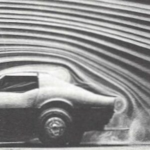

The gurney should be helpful in providing some additional downforce at the expense of some drag. Any downforce would be over the rear end and help eliminate any nose lift that might come from a wing further aft. Potentially a net gain, as you might be able to run a smaller splitter.
A problem with the Corvette (and most vehicles) is the roof often has a "roll-off" to each side. This is a styling issue and one that is less than helpful with regard to aero. This roll-off, can cause the flow to spill outwards (though not always due to the a-pillar vortex). Any loss of flow would reduce the efficiency of your installed device whether a Gurney - or wing. On a swept wing aircraft, the same thing happens, called span-wise flow. Span-wise flow decreases the overall lift. You could use an approach found on aircraft wing to A device to help increase the gurney efficiency. These would be fences - or strakes. would be attached to the roof. If you look at JPhil's pics : https://www.vettemod.com/threads/jphil-c3-aero.11847/
You'll note some slight air flow off at the edge of the roofline, but even more with the windows open. If nothing else, the fences are easily installed with 3m tape and removed - as could be the Gurney.
These have been used before on a C3 coupe (during the Silver State Race a few years back):
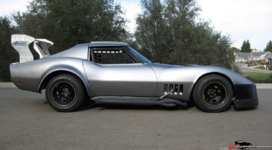
I imagine the roll-off might be increase with the side windows open, as I imagine you are required when racing. I know SCCA does.
I have recently been researching this flow issue and as an adjunct, you could attach some similar strakes to the A-Pillars (clear lexan) to help the flow and simultaneously increase the pressure at the base of the windscreen. These should be sealed at the pillar for maximum effect.
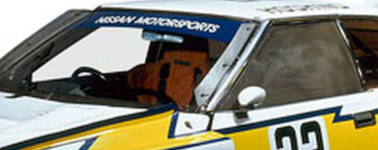
I previously have suggested that adding air to the rear deck could be very beneficial. I din't know the construction of pre 78 C3s and now see you might have an excellent opportunity to do just that. Here again as the side windows will be open (my guess) the Astro-Vent system will be of little benefit. Adding a blower - or 2 to the plenum and closing off the astro input to the plenum could give the extra flow I suggested. A bit more work than the gurneys however.
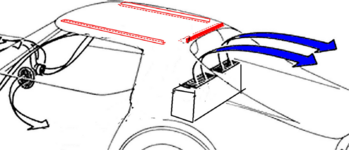
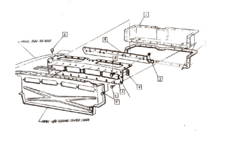
For a wing, you could place a wing between the flying butresses so it just reaches above the roofline. You could create a slot effect, which in combination with any deck augmented flow could be very useful. This would be a much bigger effort and really experimental. Something on this order - but envision it mounted forward and higher up:
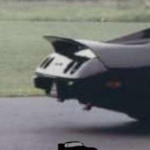
Cheers - Jim
phantomjock
Well-known member
Too cold to spray some paint outside just now, so I did a check on fans, CFM and prices. Bezos has a couple on offer;
This one is 320 CFM and just under $70:
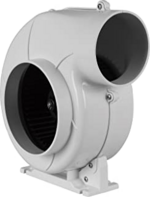
The inline fan is less output, 270 CFM but 1/2 price at about $35.00:
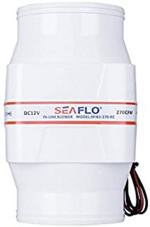 T
T
I'd expect if you just wanted to test the concept, could get by with one, but for best results use 2 in the plenum.
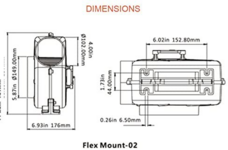
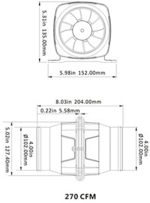
I have no idea how much room is available but here are some dimensions. The inline might work best if you wanted to use the taillight evacuation technique I wrote about earlier. It's in the Downloads Section. Or, perhaps a "blown" splitter. Careful though, don't get caught cheating...
Cheers - Jim
This one is 320 CFM and just under $70:

The inline fan is less output, 270 CFM but 1/2 price at about $35.00:
 T
TI'd expect if you just wanted to test the concept, could get by with one, but for best results use 2 in the plenum.


I have no idea how much room is available but here are some dimensions. The inline might work best if you wanted to use the taillight evacuation technique I wrote about earlier. It's in the Downloads Section. Or, perhaps a "blown" splitter. Careful though, don't get caught cheating...
Cheers - Jim
SuperBuickGuy
Well-known member
plenums work really well at slowing air down (and quieting the sound of the air) - I've been considering how to do this... too be continued 
phantomjock
Well-known member
SBG - I know you love to weld and fab aluminum - but that plenum is available ready to assemble here:
 www.fivestarbodies.com
www.fivestarbodies.com
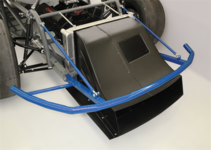
You could probably do it for less than the 180+ shipping though. It doesn't provide a laydown advantage, but does make a sealed "envelope."
After taxes are done - I hope to run some CFD of a couple of ideas - I'll post here. I know, I know, I should be working on the car!
Cheers - Jim
Plastic Radiator Ducts

You could probably do it for less than the 180+ shipping though. It doesn't provide a laydown advantage, but does make a sealed "envelope."
After taxes are done - I hope to run some CFD of a couple of ideas - I'll post here. I know, I know, I should be working on the car!
Cheers - Jim
jack
Member
Mike:I've been interested in doing a couple subtle aero experiments on my antique. Most of the tracks I have the opportunity to run on are short/tight enough that my peak speeds are probably only about 130 mph, so aero drag issues aren't all that important to me. I'm generally happy to put up with a bit of extra aero drag if I can get some reduced lift (or added downforce if I get lucky). I've mentioned before (somewhere) that I'd like to install some minor hardware on the cowl area to cause air to stagnate (My understanding is that this is the more correct word) right in front of the windshield. While this will certainly increase drag (but come in handy in the braking zones), the added pressure in that area should add downforce in the center of the car (on both axles hopefully), and the extra air pressure should help feed the L88 airbox and engine, slightly helping to offset the extra drag. But so far, I haven't had time to come up with a design of this "piece" that would be reasonably inconspicuous on the car.
The second item, which may not work in conjunction with the above piece (due to the effective increase in frontal area from the stagnant air mass at the front of the windshield), is a vertical strip of aluminum or Lexan at the rear of the t-tops, forming a wickerbill. While this worsens the already poor airflow over the rear of an early C3, this increased pressure/force at the wickerbill would be between the axles, and hopefully reasonably negligible in the moment arm trying to lift the front axle.
I always like data, and I've got a low pressure gauge that should be able to read these small pressure changes in the event I get a chance to try these experiments.
if you are same gent who's seeking (on another forum) OE valve spring info for your 12363392 bowtie heads, I actually have the real specs but cannot post on that forum.
To begin with, the specs below are found within the 2006 GM Perfomance Parts catalog:
12363392 head's spring seat diameter is 1.550" (Not the spring OD)
dual valve spring is GM pn 12462970
spring OD = 1.514"
installed height 1.940"
pressure (aka seat) at 1.940" = 140 psi
solid height = 1.200"
average spring rate = 325 psi
head x390 (cousin to your x392) is virtually same head but has larger (heavier) 2.25" OD intake valve (your x392 are 2.19" OD).
Those x970 springs are OE in both 390 & 392 heads. And, those x970 springs are OE in Both ZZ454 and ZZ502 heads and both of those motors have OE Roller Cams & OE Roller Lifters. However, as you know, GM OE roller lifters have No link bars; thus are lighter than retrofit rollers with link bars.
lastly some of those leading "experts" on that other forum are FOS and are faking lots of it and have successfully snowed an army of sycophants. Not a thing wrong with contacting PAC, but I'd first ask your cam manufacturer what its spring recommendation is. No surprise the know it alls couldn't come up with any real, correct data. BTW, I note B2B hasn't posted on that other forum in about a year; is he OK? pray he is.

